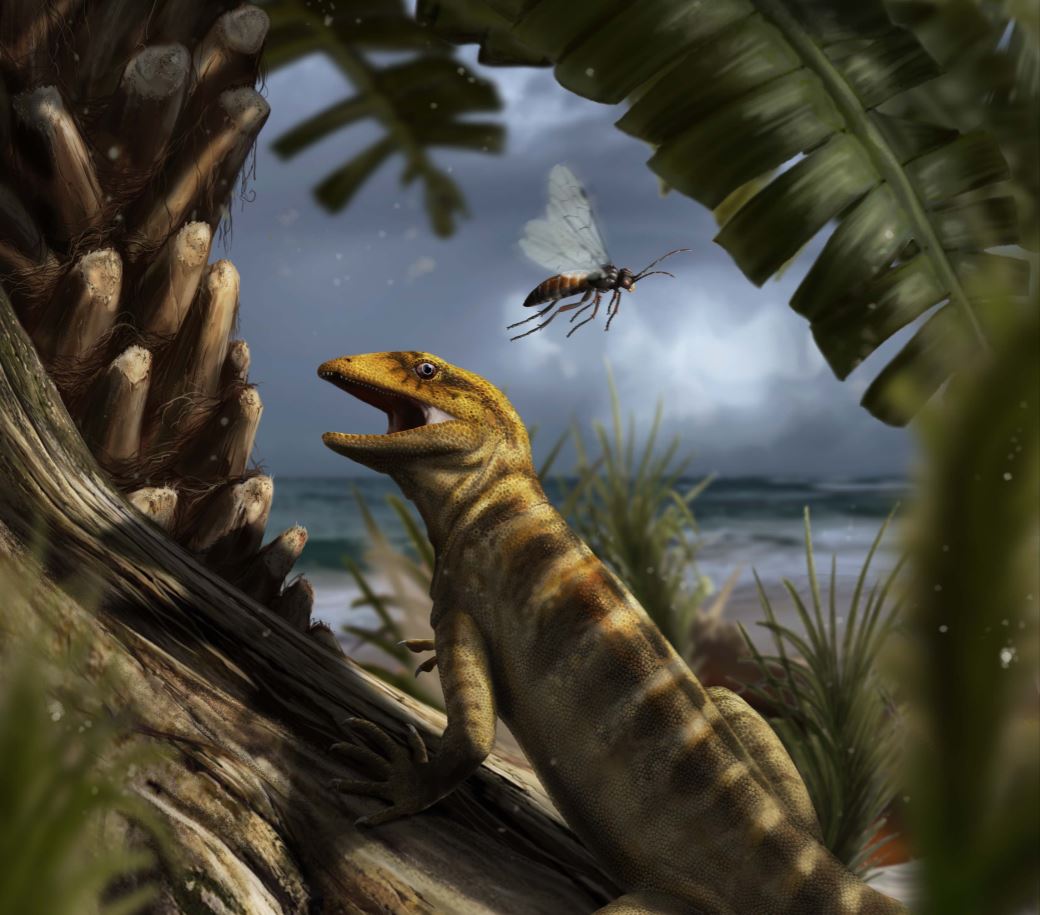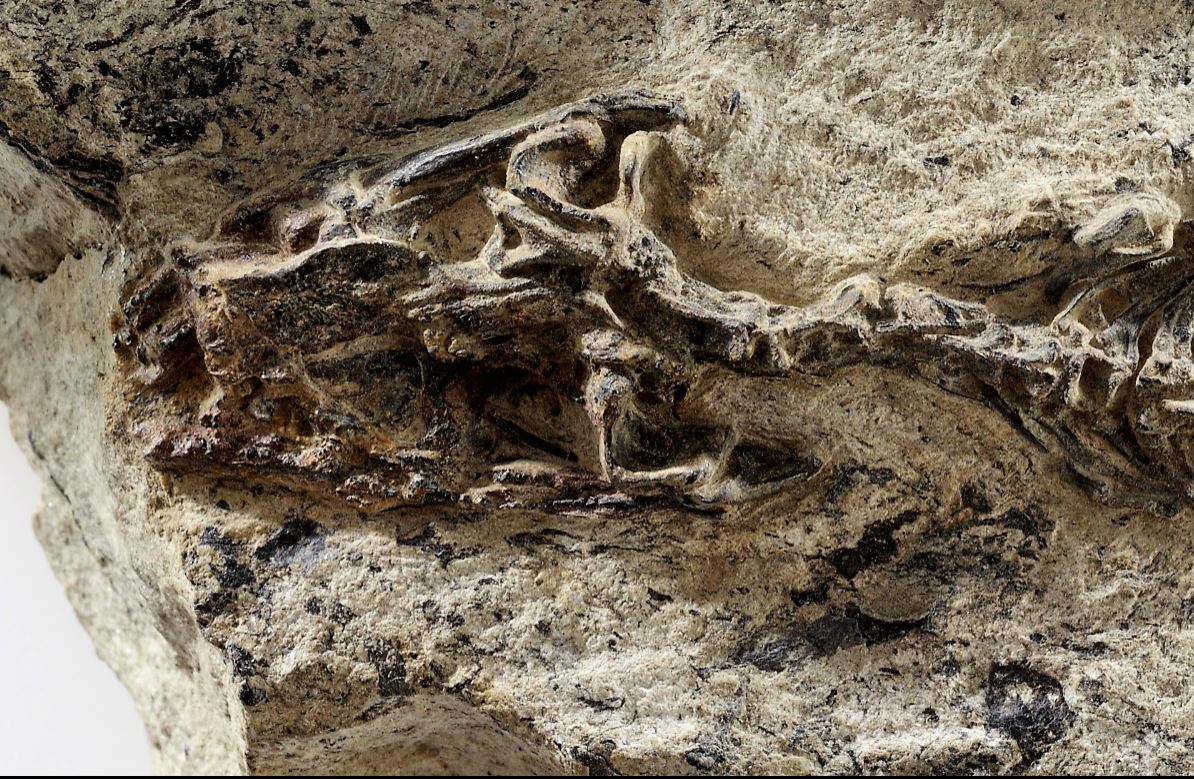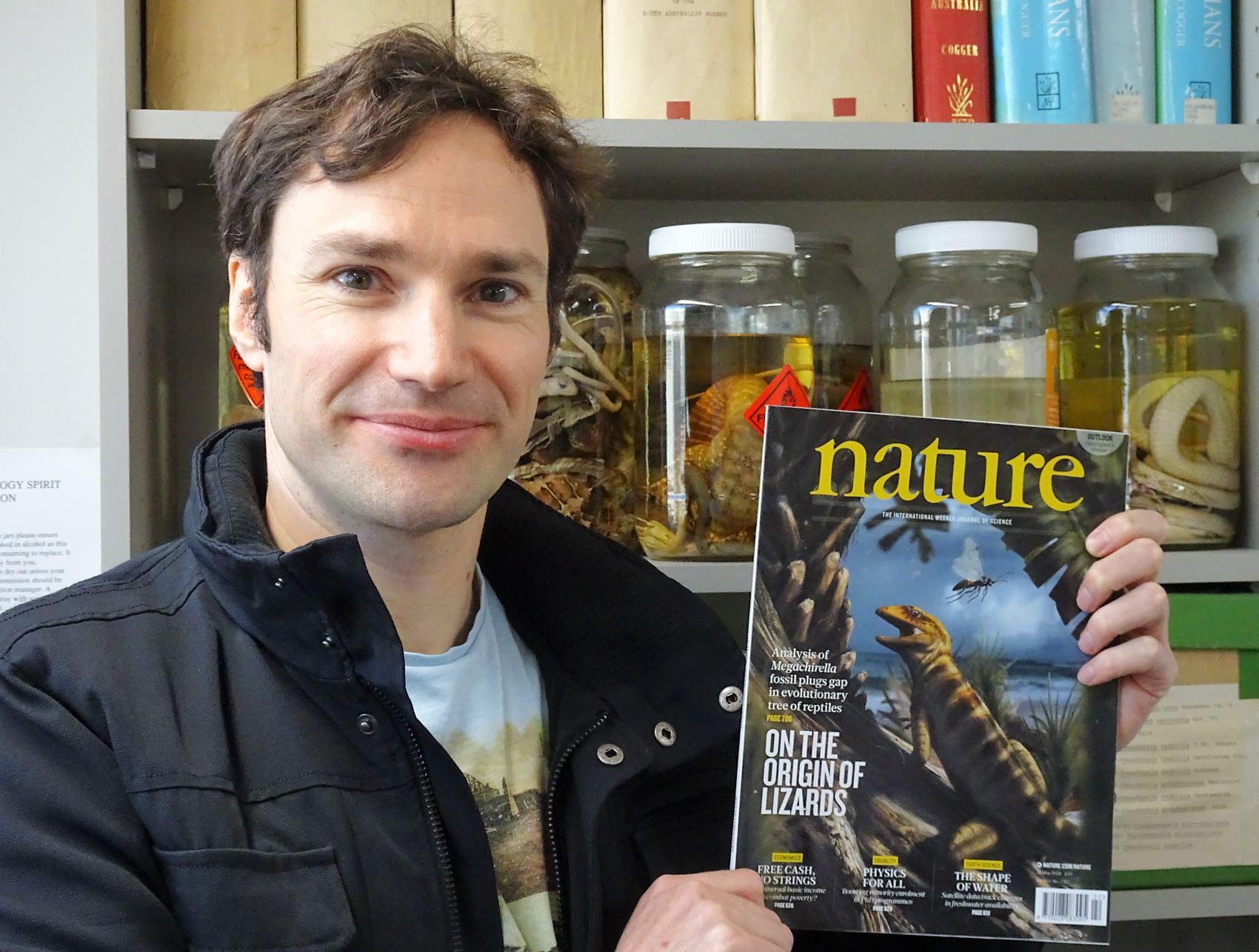
New analysis of a fossil lizard has helped close the 70-million-year gap in the fossil record on the origins of lizards and snakes.
Snakes and lizards belong to the group squamate, or scaly reptiles. Their evolutionary history has been a mystery due in part to the scarcity of fossils.
“We know that lizards have been around since the Triassic period based on molecular studies,” says Dr Alessandro Palci, Research Associate in Evolutionary Biology at Flinders University and the SA Museum, a co-author of the new study published as a cover story in Nature.
“By comparing modern lizard DNA you can estimate how fast DNA evolves,” Dr Palci says in the Science Channel.

“Using the speed of DNA evolution you can estimate how long ago they first appeared, and from that we knew they were around 240 million years ago, but we had no fossils from that period.”
Lead author University of Alberta palaeontologist Tiago Simões and colleagues re-examined a fossil of Megachirella wachtleri that was found previously in the Italian Alps.
They used a high-resolution CAT scanner to reveal previously unnoticed features in the fossil skeleton.
“You put your specicmen in the scanner and takes x-ray images of the specimen 360 degrees around, computer software takes these images and reconstruct a 3D image,” Dr Palci says.
It’s not a simple task. While the benefit of the computer scanning means you don’t have to remove the fossil from the rock it’s embedded in and risk damaging it, piecing the 2D images together to produce a 3D model requires not just brute computing force, but an understanding of anatomy to ensure that bones are aligned in a way that makes sense.
“Everything is in cross section, so you have to be familiar with the anatomy and so you can follow it through the cross sections.”
The story behind the paper. The authors explain the key discoveries of the study. © MUSE – Science Museum, Trento, Italy
Alongside the x-ray analysis, the authors carried out the largest ever dataset of fossil and living reptiles to assess where Megachirella lies in the history of squamates.
By comparing anatomical features, and the degree to which they are shared, you can figure out which animals are more closely related to each other.
The findings suggest that Megachirella is the oldest-known member of the squamate lineage, being about 72 million years older than the earliest-known true squamate.
“The previous oldest fossil record was from the Jurassic period 170 million years ago,” says Dr Palci.
“So that’s why it’s really mind-blowing. It confirms what we were expecting.”
The paper, ‘The origin of squamates revealed by a Middle Triassic lizard from the Italian Alps,’ by TR Simões, MW Caldwell, M Talanda, M Bernardi, A Palci, O Vernygora, F Bernardini, L Mancini and RL Nydam, was published in Nature, volume 557, pages 706-709 (2018).
Read Alessandro Palci’s article in The Conversation and coverage in ABC Online.
Flinders University is launching the first and only palaeontology named degree in Australasia at the purpose-built Flinders Palaeontology Laboratory in 2019. Find out more here


